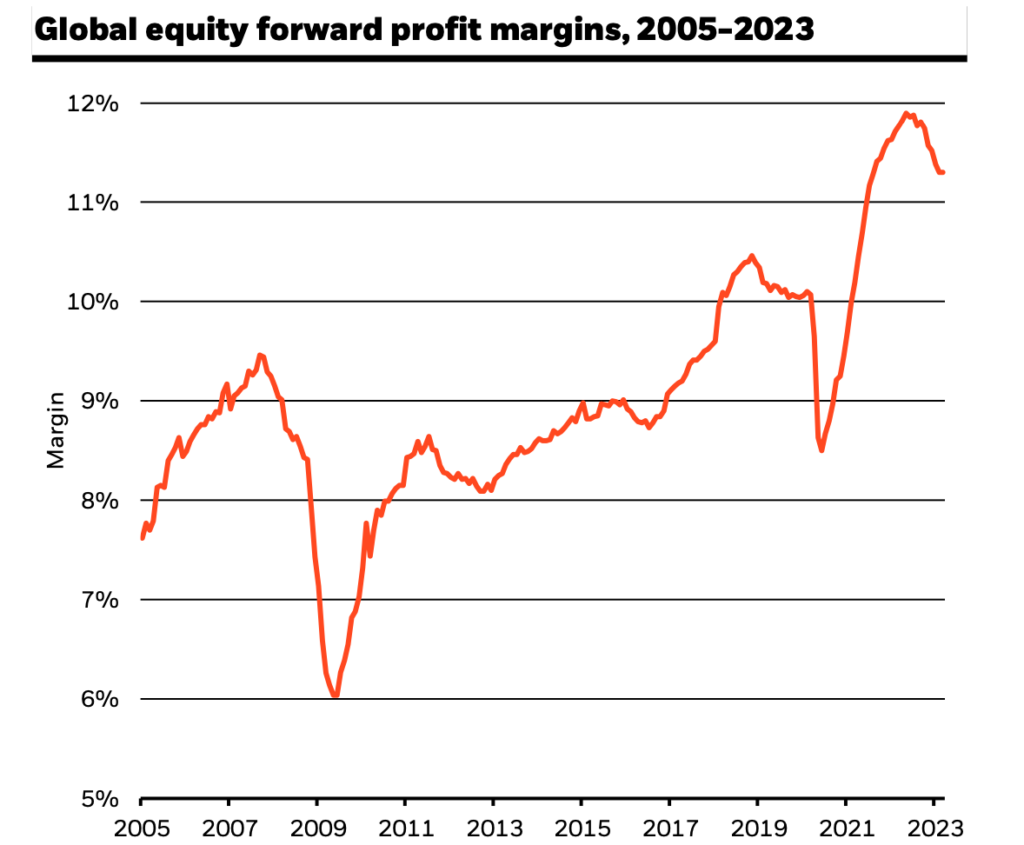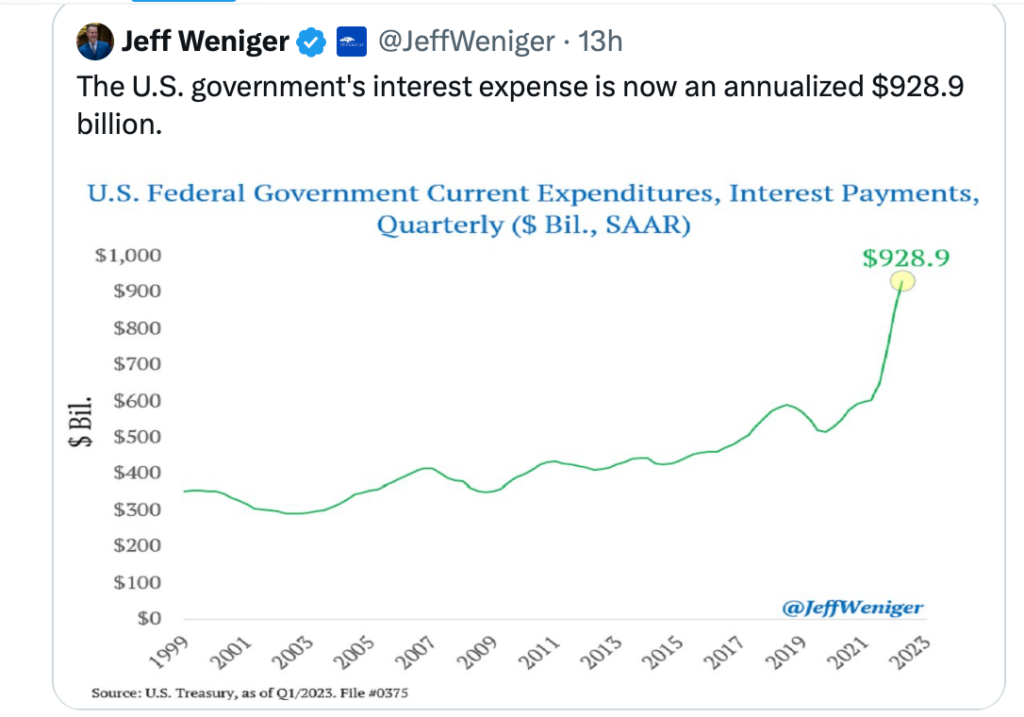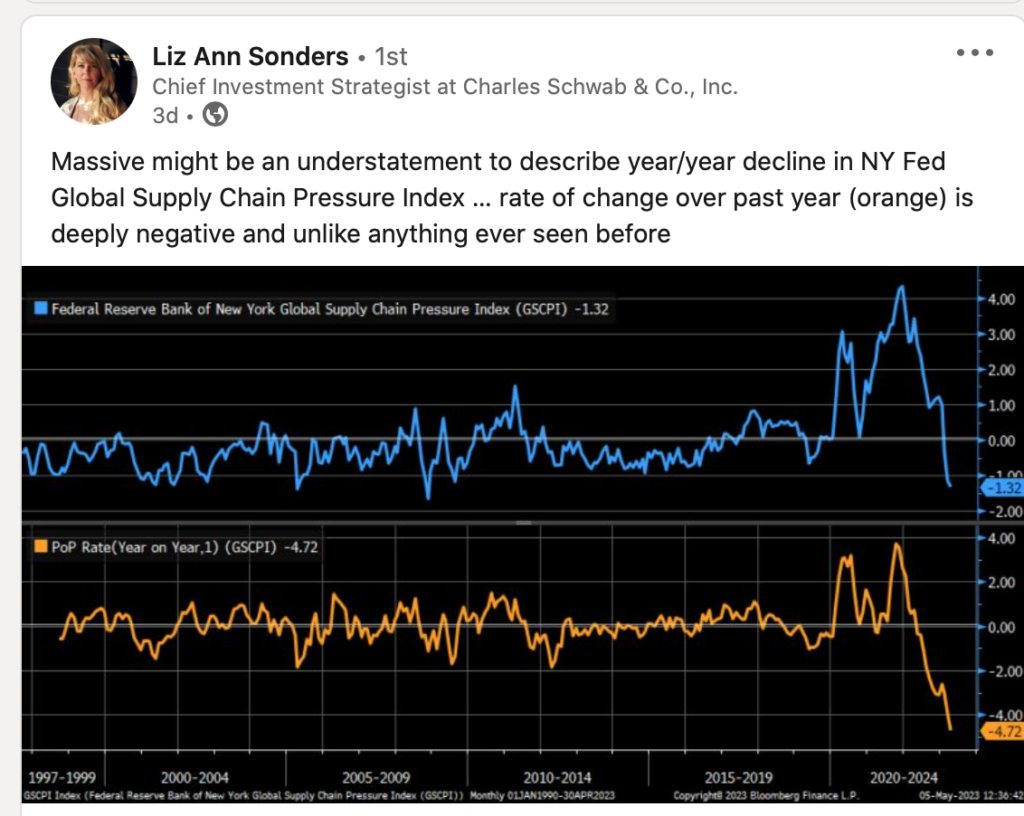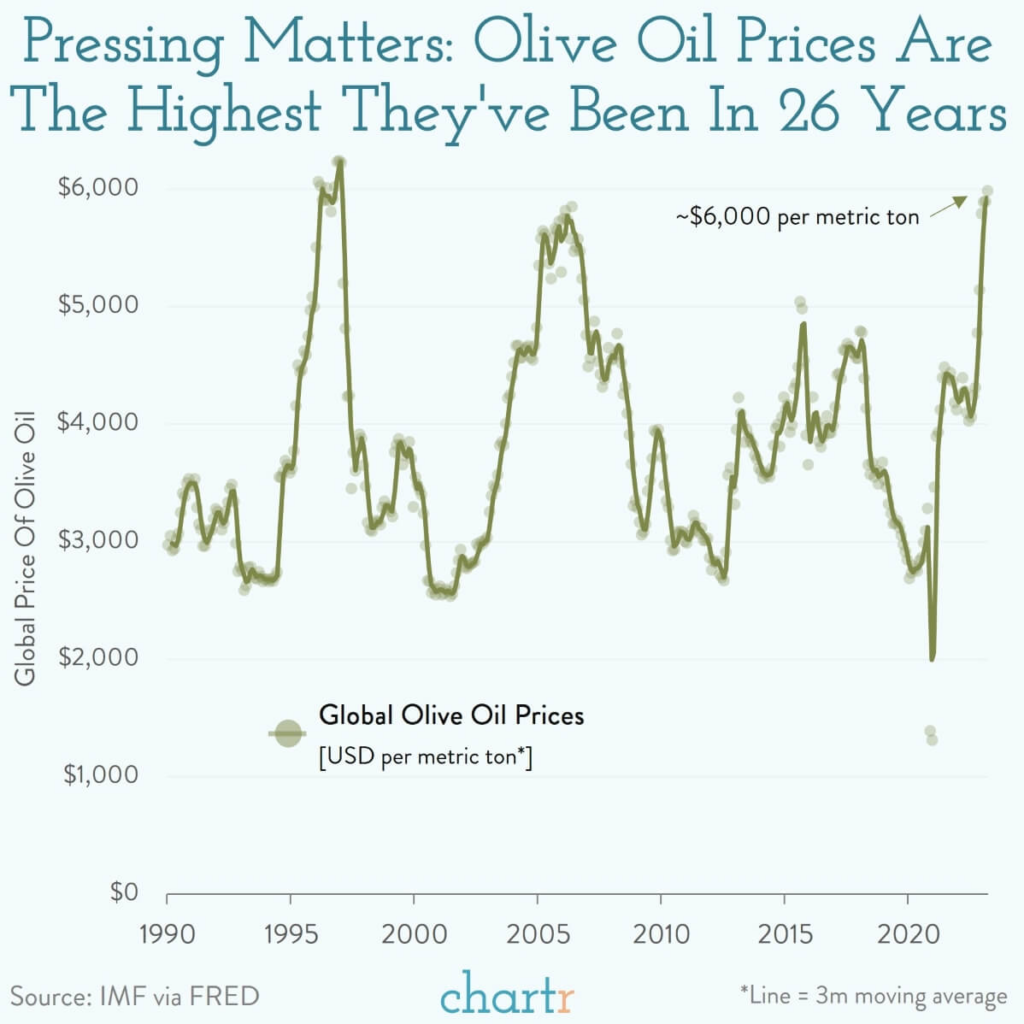1. Demand for Corporate Loans and Commercial Real Estate
Torsten Slok Apollo Group


2. Chinese Internet Stocks -15% YTD as U.S. Tech Leads
KWEB Chinese Internet ETF

3. QQQ vs. KWEB chart..straight up for QQQ in 2023….50day thru 200day to upside

4. Developed Europe ETF Runs Up to 2021 Highs
$37 to $52….big resistance at these levels on chart

5. Global Equity Profit Margins Still Elevated.
Blackrock Insights

https://www.blackrock.com/us/individual/insights/blackrock-investment-institute/outlook
6. How Many Months on Average Between the Last Fed Hike in Cycle and the First Cut Thereafter
Jim Reid Deutsche Bank I’ve done a lot of thinking recently as to whether the market has been crazy or not after the SVB collapse to price in imminent Fed cuts when the hiking cycle hasn’t yet officially finished. The reality is that the market probably got ahead of itself in the immediate aftermath, but more recently has been closer to being in line with history.
Today’s CoTD shows (in order) how many months there were between the last Fed hike in a cycle and the first cut thereafter. There is quite a wide bid-offer and every cycle is different, but the average gap is around 6 months, with the median 4 months. So if May was the last hike then median/average history would take us to September/October. Given the first cut is now fully priced by the November meeting (no meeting in October) it’s hard to criticise too heavily. DB think it’ll be in Q1 2024.
Of the 13 Fed cycles we’ve analysed here the annotated numbers on the graph show that 5 first cuts occurred when the recession had already started. A further two within 3 months. 2 more saw the recession start 6-7 months later, 1 more 11 months later and 3 outliers where the recession only started 33-69 months later.So most but not all (7/13) saw the first cut occur within 3 months of the subsequent recession.
Given where inflation currently is it’s hard to see the Fed cutting without a recession being imminent or obvious to them. Although that’s not the case at the moment, given the house view of it starting in Q4 we are probably in the right ball park for pricing in the first cut even if you could argue over the finer details.

7. U.S. Government Interest Expense is Now Annualized $929 Billion.

8. Global Supply Chain Pressure Record High to Record Low in One Year

https://www.linkedin.com/in/lizannsonders/
9. Olive Oil Prices Highest in 26 Years

10. 5 Things the Good Leaders Never Say in Meetings
Meetings can be a real drag. Especially when you’re the one making them that way.
BY MANDY GILBERT, FOUNDER AND CHIEF EXECUTIVE, CREATIVE NICHE@VERYNICHEY
Getty Images
We’ve all been there. That meeting you’ve scheduled 30 minutes for is now taking three hours. When you’ve finally called it a day, you’re still left without the answers you need. Your staff are left frustrated, your team deflated. What went wrong?
While mandatory to the company, meetings can quickly take a turn for the worst. Given the approach, it’s no wonder. Locking everyone in a room and buckling down until issues are solved is hardly an environment to garner innovation and camaraderie.
It also doesn’t help when the person in charge is making things worse. If you’re ever left scratching your head wondering why things turned sour, it’s time for some self-reflection.
Here are five signs that you’re likely the culprit of a good meeting gone wrong:
1. You use nicknames.
You may not think twice about it, but referring to a colleague as ‘man’, ‘bro’, ‘girl’, or ‘dude’ creates an issue. Not everyone interprets nicknames as a term of endearment. Some may feel it’s demeaning, while others may feel like you’re playing favorites.
Instead of navigating which nicknames are okay and which are not, do yourself a favor and just avoid the issue all together. Call someone by their first name. It’s that simple. I’m all for casual offices, but there is a level of professionalism that you need to maintain.
2. You play the blame game.
This can go two ways. You’re either blaming one person, or you’re taking all of the blame. We have a tendency as leaders to assume that if anything goes wrong, we need to point the finger. Even if it’s at ourselves.
To create a culture that’s continually innovating and connected, never single out someone or something as the culprit. Just watch any professional sports team; when they lose, they don’t blame the referee or another player. They win as a team and they lose as a team. Treat yours the same way.
3. You put people on the spot.
We all know that feeling when the teacher called your name, followed by the entire class staring at you. Even if you knew the answer, the pressure of being put on the spot makes your mind foggy and your anxiety levels high.
Why would you want to put someone through the same torture? It’s a common misconception that leaders have to keep employees on their toes to ensure they’re always prepared. But if you’ve hired right and are offering meaningful work, then this should never be an issue.
4. You shut down bad ideas.
This can seem like a no-brainer, but before you plead not guilty, chances are you’ve been an offender without even realizing it.
There are many ways we can dismiss ideas that aren’t worth developing. Your body language and facial expressions can play a big part. Snickers, eye rolls, furrowed brows, or pretending like you never heard them are all examples of how you’re telling the person (and your team) that their idea is not just bad, but not worth your time.
While no one’s asking you to sugarcoat the truth or analyze every idea that hits the table, the key is to celebrate the fact that ideas are coming forward at all. So treat every single one with consideration and respect. Otherwise, you’ll stop getting them.
5. You ‘but’ in.
“I thought you did a great job, but…”
As soon as you say those three little letters, you’ve ruined whatever came before it. If you have critical feedback to give, then give it without spinning it from a positive. Employees will appreciate you telling it like it is.
Stay away from loaded sentences. You’re only creating scenarios that are over analyzed and highly agonized.